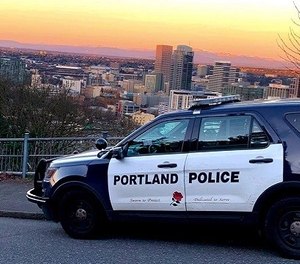
Bridging the communication gap in online crime reporting
In 2018, the Portland Police Bureau (PPB) and Portland State University (PSU) received a federal community-based grant to develop a strategic approach that leverages the knowledge of neighborhood residents in cooperation with Portland’s law enforcement efforts.
Our goal was to find out if police could improve community satisfaction and trust by adding a follow-up contact after online crime reporting. Even during the direst of times for the law enforcement profession, the data suggests police can improve community trust one conversation at a time.
Consistent with most urban settings in the country, crime rates in Portland have declined appreciably from the start of the new century. Unfortunately, these reductions were not equally distributed throughout the city. Crime rates in some of Portland’s 95 neighborhoods declined at a lower rate and some were relatively stable, while crime rates increased in other neighborhoods during this period. Among the neighborhoods that showed a divergence with crime data were the Parkrose and Hollywood neighborhoods. For this reason, among others such as having supportive neighborhood associations, the grant team decided that these two neighborhoods would be well served to receive this grant’s interventions.
The first step was to complete an action plan. To build this plan, our team sent public safety surveys to every address in the Parkrose and Hollywood neighborhoods.
The surveys sought to gain insight into how safe community members felt in their neighborhoods, their perceptions of PPB and which specific problems they felt were most prevalent in their areas. The surveys also let community members pinpoint areas where they believed problems were occurring by using a software system that produced crime heat maps for our researchers.
With the help of neighborhood leadership in Parkrose and Hollywood, two separate steering committees were formed. The steering committees comprised business owners and residents from each community who helped prioritize a chosen list of problems and suggested intervention strategies.
To help provide intermediate knowledge of these topics so the groups could make an informed, targeted selection, the steering committees were shown a data analysis of the community survey results and an analysis of PPB's calls for service and arrest data. The ability to compare and contrast the survey data alongside the police data allowed them to make the most informed decisions regarding the problems in each neighborhood. In addition to steering committee input, PPB used available evidence-based research and our current 911 response capabilities to outline the action plan’s final intervention strategies.
One of the action plan’s primary goals aimed to improve confidence in police among community members who report crimes. Many factors influence a community’s confidence in the police. While police agencies have limited control over these factors, police do have an opportunity to build community trust with organic, one-on-one interactions.
Unfortunately, world affairs undercut our ability to perform traditional interventions as planned. Due to the pandemic and wave of civil unrest in 2020, public trust in the police plummeted to historic lows. Therefore, in 2021, we reshaped our first goal to explore a new way of improving public trust and satisfaction: enhanced outreach to victims who report crimes online.
Research shows that prior criminal victimization makes victims more likely to develop negative attitudes toward the police. This is particularly true among individuals who use online systems to report criminal behavior. Most law enforcement agencies that offer online reporting services simply send a single automated email back to the community member with an incident number to use for mandatory forms like insurance claims. About 70% of larger agencies and 44% of medium-sized agencies have online reporting platforms.
To try to improve relationships with community members who report crimes online, some PPB officers at North Precinct began additional outreach: officers contact each victim via phone or email two weeks after their initial online report. In their follow-up, officers communicate concern for the victim and give the victim an opportunity to voice complaints about their experience. The officers also offer guidance on preventing revictimization.
One way officers offer guidance is by distributing crime prevention fliers tailored to the specific crime the community member reported. It is worth noting that almost 50% of property crimes in Portland are reported online and therefore nearly half of property crime victims could benefit from this campaign.
Our research partners at PSU then analyzed data gathered from a post-contact survey that PPB sends to victims who reported a crime online and received a police follow-up. The post-contact surveys seek to judge victims’ perceptions of PPB’s follow-up contact, their satisfaction with how the officer handled the crime report and their general assessment of PPB. Out of the roughly 6,000 post-contact surveys pushed out, about 1,050 have since been returned with feedback from community members. Preliminary survey findings indicate online follow-ups were overwhelmingly successful in improving public trust.
Our data shows that victims who received follow-up contact were significantly more likely (45.4%) to be satisfied with the overall police response as compared to victims who did not receive the additional outreach (13.1%). Many crime victims wrote responses in their surveys expressing gratitude and support for PPB. One community member wrote, “Good job with the change in protocol because it will change perceptions about police and help with any additional funding you get.”
NEXT: Leveraging survey information to improve agency performance
Copyright © 2025 PoliceGrantsHelp.com. All rights reserved.

